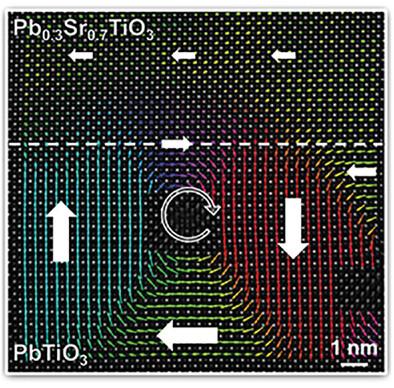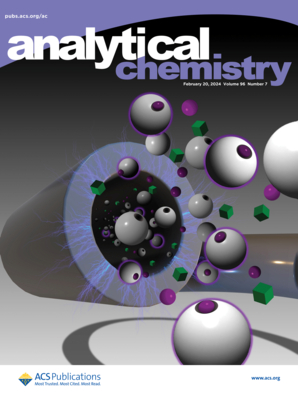Highly Responsive Polar Vortices in All-Ferroelectric Heterostructures
IF 6.7
1区 化学
Q1 CHEMISTRY, ANALYTICAL
引用次数: 0
Abstract
The discovery of polar vortices and skyrmions in ferroelectric-dielectric superlattices [such as (PbTiO3)n/(SrTiO3)n] has ushered in an era of novel dipolar topologies and corresponding emergent phenomena. The key to creating such emergent features has generally been considered to be related to counterpoising strongly polar and non-polar materials thus creating the appropriate boundary conditions. This limits the utility these materials can have, however, by rendering (effectively) half of the structure unresponsive to applied stimuli. Here, using advanced thin-film deposition and an array of characterization and simulation approaches, polar vortices are realized in all-ferroelectric trilayers, multilayers, and superlattices built from the fundamental building block of (PbTiO3)n/(PbxSr1−xTiO3)n wherein in-plane ferroelectric polarization in the PbxSr1−xTiO3 provides the appropriate boundary conditions. These superlattices exhibit substantially enhanced electromechanical and ferroelectric responses in the out-of-plane direction that arise from the ability of the polarization in both layers to rotate to the out-of-plane direction under field. In the in-plane direction, the layers are found to be strongly coupled during switching and when heterostructured with ferroelectric-dielectric building blocks, it is possible to produce multistate switching. This approach expands the realm of systems supporting emergent dipolar texture formation and does so with entirely ferroelectric materials thus greatly improving their responses.

全费电异质结构中的高响应极涡
铁电介质超晶格[如 (PbTiO3)n/(SrTiO3)n] 中极性漩涡和天幕的发现开创了一个新的双极拓扑结构和相应新兴现象的时代。一般认为,产生这种新现象的关键在于将强极性和非极性材料对调,从而创造出适当的边界条件。然而,这限制了这些材料的实用性,因为它们(实际上)使一半的结构对施加的刺激没有反应。在这里,我们利用先进的薄膜沉积技术和一系列表征与模拟方法,在全铁电体三层、多层和超晶格中实现了极性涡流,这些超晶格由 (PbTiO3)n/(PbxSr1-xTiO3)n 这一基本构件构建而成,其中 PbxSr1-xTiO3 的面内铁电极化提供了适当的边界条件。这些超晶格在面外方向表现出显著增强的机电和铁电响应,这是由于两层中的极化都能在磁场作用下旋转到面外方向。在面内方向上,这两个层在开关过程中会发生强耦合,当与铁电-介电构件异质结构时,就有可能产生多态开关。这种方法拓展了支持新出现的偶极纹理形成的系统领域,并通过完全铁电材料实现了这一目标,从而极大地改善了它们的响应。
本文章由计算机程序翻译,如有差异,请以英文原文为准。
求助全文
约1分钟内获得全文
求助全文
来源期刊

Analytical Chemistry
化学-分析化学
CiteScore
12.10
自引率
12.20%
发文量
1949
审稿时长
1.4 months
期刊介绍:
Analytical Chemistry, a peer-reviewed research journal, focuses on disseminating new and original knowledge across all branches of analytical chemistry. Fundamental articles may explore general principles of chemical measurement science and need not directly address existing or potential analytical methodology. They can be entirely theoretical or report experimental results. Contributions may cover various phases of analytical operations, including sampling, bioanalysis, electrochemistry, mass spectrometry, microscale and nanoscale systems, environmental analysis, separations, spectroscopy, chemical reactions and selectivity, instrumentation, imaging, surface analysis, and data processing. Papers discussing known analytical methods should present a significant, original application of the method, a notable improvement, or results on an important analyte.
 求助内容:
求助内容: 应助结果提醒方式:
应助结果提醒方式:


